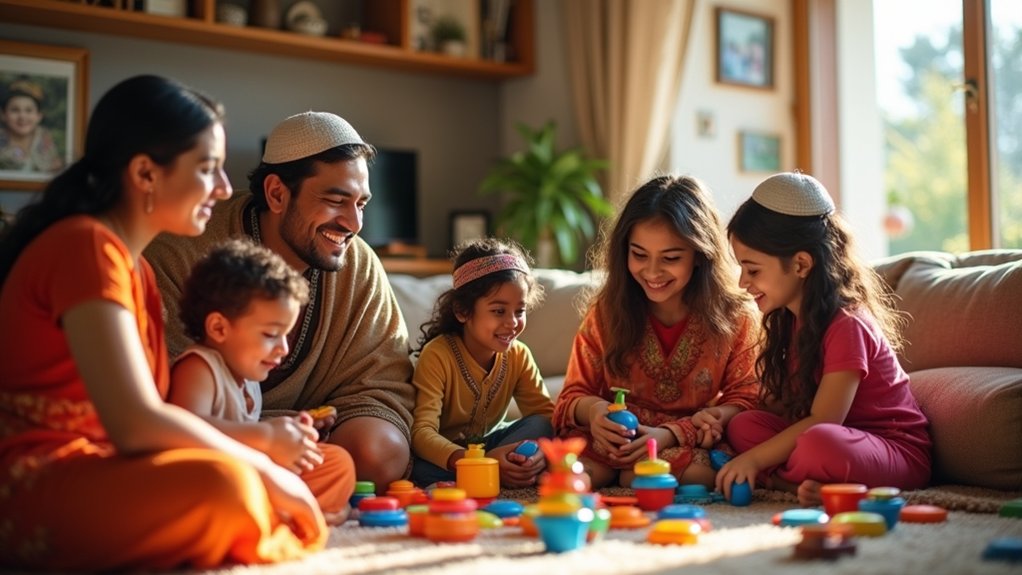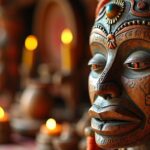
How did Byzantine culture and religion spread in Eastern Europe
Just how Byzantine culture and religion subtly transformed Eastern Europe reveals a fascinating blend of faith, politics, and innovation that shaped history.

Interfaith marriages are more than personal unions; they shape cultural identity in meaningful ways. When two people from different faiths come together, interfaith marriages blend beliefs, traditions, and values, creating new expressions of family life and spirituality. This process influences cultural identity by reshaping rituals at home, encouraging dialogue between generations, and inspiring communities to rethink how faith and culture connect.

Blending traditions and rituals in an interfaith marriage can create a meaningful spiritual journey for both partners. When two people from different religions come together, they often discover new ways to celebrate faith, spirituality, and family. This thoughtful blending of traditions and rituals allows each partner to honor their beliefs while building shared practices that reflect their united values.
Over time, couples can adapt familiar customs, introduce new ceremonies, and create a spiritual home that respects both backgrounds. By approaching traditions and rituals with openness and care, interfaith couples strengthen their bond, deepen their spirituality, and celebrate a life of love, respect, and mutual understanding.
Interfaith marriages can be challenging, but they are powerful opportunities for expanding religious tolerance and understanding. Through open conversations about faith, couples build cultural empathy and learn to honor each other’s traditions. This kind of religious tolerance helps families and communities move beyond stereotypes, reduce prejudice, and create space for spiritual growth.
Over time, expanding religious tolerance and understanding within relationships can inspire broader social change, deepen respect for diverse beliefs, and enrich shared cultural identity.
How do interfaith couples blend diverse traditions into meaningful family celebrations? Interfaith couples often embrace holiday fusion, combining rituals, foods, and symbols to honor both faiths.
This celebration creativity encourages inclusivity and respect, helping everyone connect with their spiritual roots in a warm, accessible way. By designing shared, personalized rituals—like lighting candles, offering prayers from both traditions, or rotating holiday menus—interfaith couples create unique festivities that strengthen bonds and reflect evolving spiritual identities. In the end, interfaith couples show how blending traditions can enrich family life through mindful, inclusive practices that celebrate love, faith, and culture together.
Interfaith marriages often shape influencing language and communication styles within the home. When two traditions come together, families may develop bilingual routines, shared phrases, and new ways of expressing faith and love.
This blending supports influencing language and communication styles that honor both religions, making daily conversations more inclusive and respectful. Over time, children and adults alike learn to navigate prayer, rituals, and family discussions with empathy, strengthening bonds through influencing language and communication styles that reflect their shared spiritual heritage.
When raised in interfaith families, children often develop a multicultural worldview that blends religious and cultural perspectives from both sides. This multicultural worldview grows through daily exposure to different beliefs, rituals, and stories, helping kids build empathy and open-mindedness.
Over time, a strong multicultural worldview supports healthy identity formation, allowing children to honor their spirituality, respect diverse religions, and value inclusivity in family life and the wider community.
Interfaith marriages often challenge and redefine social norms by bringing together customs, beliefs, and traditions that were once seen as separate. This blending of faiths encourages people to rethink identity and belonging within religion and spirituality.
As interfaith marriages become more common, they push cultural boundaries, foster inclusivity, and help shape new norms that honor diversity across spiritual and religious communities.
Interfaith marriages play a powerful role in promoting inclusive community connections. When couples blend traditions from different faiths, they naturally create spaces where understanding and respect can grow. This kind of cultural exchange helps neighbors, friends, and families learn from one another, deepening spirituality and building bridges across religious differences.
Promoting inclusive community connections also means celebrating diverse customs together. From shared holidays to joint service projects, these experiences invite people of all backgrounds to participate. Over time, promoting inclusive community connections fosters trust, mutual support, and a stronger sense of belonging within the broader spiritual and religious community.
Interfaith marriages play a powerful role in shaping cultural identity by blending beliefs, traditions, and spiritual practices from different backgrounds. Through interfaith marriages, families create unique rituals, shared celebrations, and inclusive values that nurture religious tolerance and respect. This blending helps children develop multicultural perspectives while challenging rigid social norms and encouraging more compassionate community connections. By honoring each partner’s faith and spirituality, interfaith marriages enrich cultural identity and contribute to a more empathetic, inclusive society for future generations.

Just how Byzantine culture and religion subtly transformed Eastern Europe reveals a fascinating blend of faith, politics, and innovation that shaped history.

What mysteries did Olmec and Mayan religions unlock about life, power, and the cosmos? Their beliefs shaped civilizations in ways still felt today.

Bridging the seen and unseen, African art reveals deeper spiritual meanings—discover how creativity becomes a sacred dialogue in these cultures.

Linking sacred numbers to celestial events, the Maya intertwined math and religion in ways that still mystify scholars today. Discover their profound connection.

Only by examining religion can we grasp the deep values shaping cultures—discover how belief systems influence identity and social cohesion.

The transformative impact of culture on Buddhist practices reveals unexpected variations that challenge traditional interpretations and invite deeper exploration.